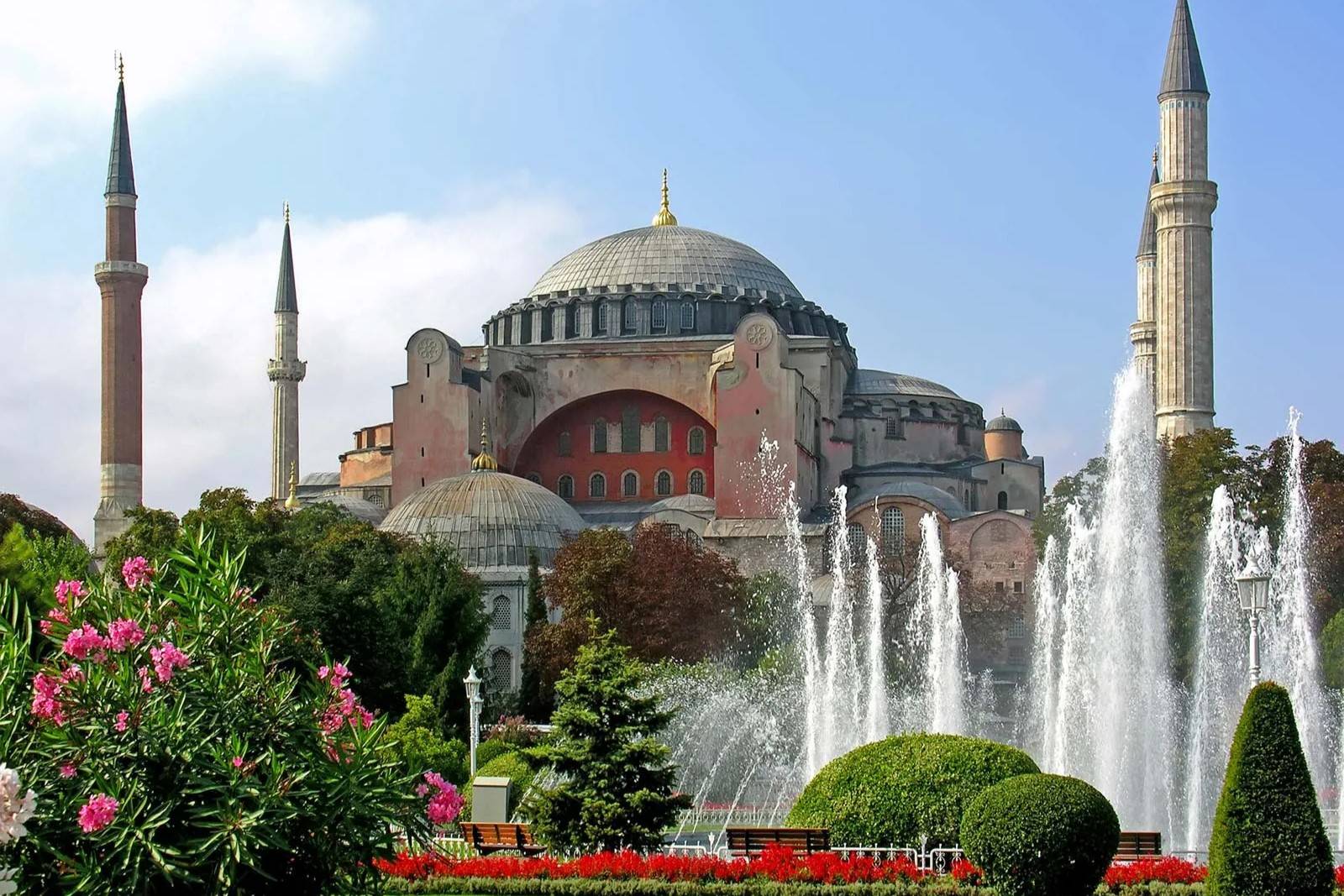Hagia Sophia Turkey’s Byzantine Wonder

Have you ever wondered why Hagia Sophia in Turkey is considered a Byzantine wonder? This architectural marvel has stood the test of time, showcasing a blend of Christian and Islamic influences. Originally built as a cathedral in 537 AD, it later transformed into a mosque and now serves as a museum. Its massive dome, intricate mosaics, and stunning minarets attract millions of visitors each year. Walking through its halls feels like stepping back in time, offering a glimpse into centuries of history and culture. Whether you're a history buff or just love beautiful buildings, Hagia Sophia is a must-see.
Hagia Sophia: A Glimpse into History
Hagia Sophia, located in Istanbul, Turkey, stands as a testament to Byzantine architecture and history. Originally built as a cathedral, it later served as a mosque and now functions as a museum. Let's explore some fascinating aspects of this architectural marvel.
Architectural Marvels of Hagia Sophia
Hagia Sophia's architecture is a blend of different styles and influences. Here are some key features that make it unique:
The Dome: The massive central dome, measuring 31 meters in diameter, seems to float above the structure. This engineering feat was revolutionary for its time.
Mosaics: Intricate mosaics depicting religious scenes and figures adorn the interior. These artworks reflect the Byzantine Empire's rich cultural heritage.
Minarets: Added during the Ottoman period, the four minarets surrounding Hagia Sophia highlight its transformation into a mosque.
Marble Columns: Sourced from various parts of the ancient world, these columns add to the grandeur and diversity of the building's materials.
Historical Significance of Hagia Sophia
Hagia Sophia has witnessed numerous historical events and changes over the centuries. Here are some notable moments:
Construction by Emperor Justinian: Built in 537 AD under Emperor Justinian I, it symbolized the Byzantine Empire's power and religious devotion.
Conversion to a Mosque: In 1453, after the Ottoman conquest of Constantinople, Sultan Mehmed II converted Hagia Sophia into a mosque, adding Islamic elements.
Museum Status: In 1935, Mustafa Kemal Atatürk, the founder of modern Turkey, transformed Hagia Sophia into a museum, making it accessible to people of all faiths.
Cultural and Religious Impact
Hagia Sophia has played a significant role in both Christian and Islamic traditions. Here are some ways it has influenced culture and religion:
Christian Pilgrimage Site: For centuries, it was a major pilgrimage destination for Christians, who came to admire its beauty and seek spiritual solace.
Islamic Scholarship: As a mosque, it became a center for Islamic learning and scholarship, attracting scholars and theologians from across the Muslim world.
Symbol of Unity: Today, Hagia Sophia stands as a symbol of unity and coexistence, reflecting the diverse cultural and religious history of Istanbul.
Visiting Hagia Sophia Today
A visit to Hagia Sophia offers a unique experience, blending history, art, and architecture. Here are some tips for making the most of your visit:
Guided Tours: Consider joining a guided tour to gain deeper insights into the history and significance of Hagia Sophia.
Photography: Capture the stunning details of the mosaics, dome, and minarets. Early morning or late afternoon light offers the best conditions.
Nearby Attractions: Explore other nearby historical sites like the Blue Mosque, Topkapi Palace, and the Basilica Cistern to enrich your visit.
Respectful Attire: When visiting, dress modestly out of respect for the site's religious significance, especially if it is functioning as a mosque during your visit.
Hagia Sophia remains a must-see destination for anyone interested in history, architecture, and culture. Its rich past and stunning beauty continue to captivate visitors from around the world.
Hagia Sophia's Timeless Appeal
Hagia Sophia stands as a testament to Turkey's rich history. Its Byzantine architecture and stunning mosaics draw visitors from around the globe. This iconic structure has witnessed empires rise and fall, yet remains a symbol of resilience and beauty. Exploring its vast halls and intricate details offers a glimpse into the past, making it a must-visit for history buffs and travelers alike.
Whether you're marveling at its massive dome or admiring the blend of Christian and Islamic art, Hagia Sophia never fails to impress. Its transformation from a cathedral to a mosque and now a museum reflects Turkey's diverse cultural heritage. Visiting Hagia Sophia is not just a trip through history; it's an experience that connects you to centuries of human achievement. Don't miss the chance to see this Byzantine wonder in person.

